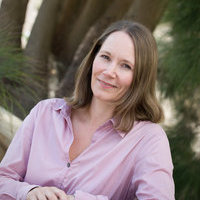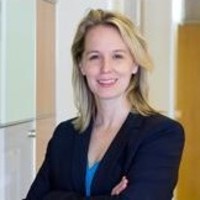
Peter Kemp
Related Authors
Billy Wong
University of Reading
Araba Sey
University of Washington
Julianne Lynch
Deakin University
Seraphin S A Alava
Université Toulouse II Jean Jaurès
Jacek Pyzalski
Adam Mickiewicz University in Poznań
Adriana Gil-Juárez
Universitat Autònoma de Barcelona
Irene Kamberidou, Full Professor of Sociology - Gender Issues ...
National and Kapodistrian University of Athens
Brenda L Berkelaar
École Polytechnique de Montréal
Elizabeth K . Eger
Texas State University









Uploads
Report by Peter Kemp
qualification at GCSE or A-level and not all students sit qualifications in computing. Even where a qualification is taught by a school, subject requirements might limit the type of student who is able to take the
course. Whilst at A-level computing is a well established subject, it is only offered by a minority of centres, with some areas having no provision. Until recently the number of students taking A-level computing has been in decline (McBride, 2008); JCQ(2014, 2015a, 2016b) figures show that since 2014 numbers have been increasing year on year. A new computing GCSE was introduced by the OCR exam board in 2011 (OCR, 2011) with the first cohort of students sitting exams in 2013. Understandably, not all schools adopted this
qualification immediately, and whilst the number of centres and students have been increasing, the numbers have not yet matched those of ICT (JCQ, 2016c). A similar picture has been observed at A-level with numbers of computing students rising 50% in 5 years but still well below ICT (JCQ, 2011, 2015a). Additionally, with recent school funding changes at A-level, from a per subject to per student system (BBC, 2015; Education Funding Agency, 2016), the computing cohort size of A-level providers now becomes a greater
concern for the ongoing financial viability of the subject. Smaller subject cohorts may make a course too expensive for smaller providers.
This report’s first aim is to understand the A-level and GCSE computing cohorts beyond the widely publicised disparity in gender (JCQ, 2015b). It will look at provider type, provider location, subject mix, the ethnicity and socio-economic status of students. To conduct this research the report uses the DfE National Pupil Database (NPD) (DfE, 2015d) linked to Edubase (DfE, 2016a). The NPD provides individual student examination and characteristic data for GCSE and A-level; Edubase provides profile information on
individual schools.
The GCSE and A-level in ICT are being discontinued in 2017 (DfE, 2015a). This leads to the report’s second aim, which is to contrast the computing and ICT qualifications. The DfE justification for dropping the ICT qualification and keeping computer science is that the subjects occupy the “same [subject] space” (quoted in Vaughan, 2015). It is not within the scope of this report to address the overlap in content between these subjects, instead the aim here is to compare the profiles of schools offering each qualification and the examination cohorts. Can we expect students who would have previously chosen ICT qualifications to now choose computing, or that providers which previously ran ICT courses will now switch to computing?
This report is the first iteration of an annual statistical review of computing in England. As such, we welcome comments and suggestions for improvement, as well as suggestions for areas that we can explore further. An updated version, using data from 2016, will be available next year.
Papers by Peter Kemp
qualification at GCSE or A-level and not all students sit qualifications in computing. Even where a qualification is taught by a school, subject requirements might limit the type of student who is able to take the
course. Whilst at A-level computing is a well established subject, it is only offered by a minority of centres, with some areas having no provision. Until recently the number of students taking A-level computing has been in decline (McBride, 2008); JCQ(2014, 2015a, 2016b) figures show that since 2014 numbers have been increasing year on year. A new computing GCSE was introduced by the OCR exam board in 2011 (OCR, 2011) with the first cohort of students sitting exams in 2013. Understandably, not all schools adopted this
qualification immediately, and whilst the number of centres and students have been increasing, the numbers have not yet matched those of ICT (JCQ, 2016c). A similar picture has been observed at A-level with numbers of computing students rising 50% in 5 years but still well below ICT (JCQ, 2011, 2015a). Additionally, with recent school funding changes at A-level, from a per subject to per student system (BBC, 2015; Education Funding Agency, 2016), the computing cohort size of A-level providers now becomes a greater
concern for the ongoing financial viability of the subject. Smaller subject cohorts may make a course too expensive for smaller providers.
This report’s first aim is to understand the A-level and GCSE computing cohorts beyond the widely publicised disparity in gender (JCQ, 2015b). It will look at provider type, provider location, subject mix, the ethnicity and socio-economic status of students. To conduct this research the report uses the DfE National Pupil Database (NPD) (DfE, 2015d) linked to Edubase (DfE, 2016a). The NPD provides individual student examination and characteristic data for GCSE and A-level; Edubase provides profile information on
individual schools.
The GCSE and A-level in ICT are being discontinued in 2017 (DfE, 2015a). This leads to the report’s second aim, which is to contrast the computing and ICT qualifications. The DfE justification for dropping the ICT qualification and keeping computer science is that the subjects occupy the “same [subject] space” (quoted in Vaughan, 2015). It is not within the scope of this report to address the overlap in content between these subjects, instead the aim here is to compare the profiles of schools offering each qualification and the examination cohorts. Can we expect students who would have previously chosen ICT qualifications to now choose computing, or that providers which previously ran ICT courses will now switch to computing?
This report is the first iteration of an annual statistical review of computing in England. As such, we welcome comments and suggestions for improvement, as well as suggestions for areas that we can explore further. An updated version, using data from 2016, will be available next year.